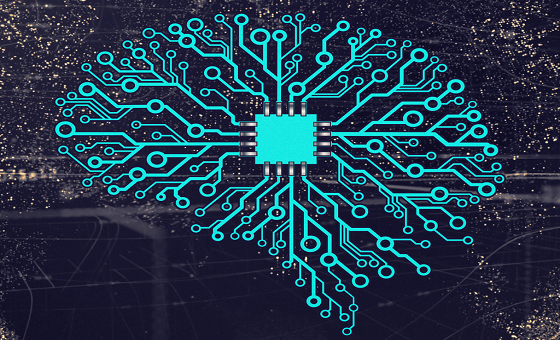Summary
India’s approach toward developing artificial intelligence (AI) technologies mirrors its economic transformation – focused in leveraging AI technologies to tackle development challenges in areas like health, education, agriculture and transportation, and constrained in that ongoing efforts are stymied by prevailing gaps in deploying technologies to modernise various sectors. How India resolves this tension will determine AI’s efficacy and utility in driving economic growth.
Artificial Intelligence (AI) refers to the development of computing systems that perform tasks requiring human intelligence. Some examples include decision making, visual perception, speech recognition, navigating systems and learning. Systems or devices that have strong AI capabilities should be able to think and act like a human, learning and adapting from a base of knowledge. AI applications can be used to ease daily activities by assisting in tasks like cleaning and related home services, entertainment, transportation and shopping. Complex applications
also exist. AI technologies now have a role on activities related to war and conflict, healthcare, education, public safety and public administration.
AI mediates and shapes how people interact with technology and vice-versa. Individuals today, through a smartphone or device, have a personalised, albeit fluid, relationship with AI that affects their well-being, highlights risks and opportunities and provides timely services. AI’s potential impact has received considerable attention, particularly given how jobs and people’s livelihoods could be affected. AI-related development will cause disruptions to labour markets. As a result, decisions concerning the development of AI must balance two objectives – advancing innovation while ensuring resultant gains are equitably shared across society. To achieve the latter, countries have to devise regulatory frameworks that will affect how AI benefits are accrued and risks mitigated.
India is investing more on AI. In 2018, New Delhi outlined a national AI strategy (#AIforALL) through the National Institution for Transforming India (NITI Aayog), one of only 20 countries to have done so. India’s AI focus is socially oriented focusing on technologies that could improve the lives of Indian citizens. NITI Aayog has outlined five areas of focus where AI investments will go – health to boost access and affordability of healthcare; education to increase access to and quality of education; smart cities to increase connectivity; agriculture to increase farmer
productivity and incomes; and smart mobility and transportation to help address traffic and congestion problems.
New Delhi’s core policy focus through AI is to ensure technologies are deployed to produce the maximum social impact. India’s national AI strategy comports with the country’s development needs and goals. It is for this reason that agriculture was chosen as a key sector where AI will be used despite limited global experiences of AI in that sector. Since 2017, AI has received around US$150 million (S$209 million) in India but most of these investments are private. In any case, these investments are dwarfed by the money spent by private firms in the United States (US), China and the European Union that are in the billions. In the 2018-19 budget, New Delhiallocated US$480 million (S$668.5 million) to spur emerging technologies (including AI) but this outlay also pales in comparison to the investments being made by China and the US. Financing, both public and private, has to increase. Besides money, India’s AI strategy calls for building centres of excellence or ‘an ecosystem’ where various AI research efforts breed.
Demand exists for India to absorb and deploy AI. Absorption of AI technologies could be high, given prevailing gaps in India’s development and the range of policy challenges, like agriculture, where AI can be deployed. Supply factors also help. India has a large and growing supply of technical graduates who could be mobilised for AI purposes. Of course, the training and skills of this group is variable which will also affect how they operate and use AI-related technologies. This challenge though doubles as an opportunity. However, New Delhi has to create new AI focused research institutions and train and retrain engineers for an AI-centric technological
infrastructure.
That said, one key constraint for AI absorption in India is poor internet access and connectivity. Mobile internet access dominates across India. Though internet penetration and access are both rising, investments in domestic broadband have to accelerate to leverage and extract value from AI technologies. More public funding must be directed for this purpose. Limited bandwidth, given India’s vast landmass, also stymies AI development and deployment. Another constraint in terms of AI in India is human capital inadequacies. India has to redirect existing glut of engineers and engineering graduates for further training to work with AI. Professional training vis-à-vis AI
is largely conducted by firms for specific projects. Training has to be more broadly available through graduate programs that focus squarely on AI. Tellingly, India has only 386 out of 22,000 PhD researchers working on AI globally. Besides training, exposure and experience also matters. India’s AI strategy does offer a blueprint for achieving this goal by calling for the establishment of COREs (Centres of Research Excellence in Artificial Intelligence) that will focus on developing AI research and deploying it to create AI applications to address social policy gaps. Industryuniversity links could help spur such programmes and NITI Aayog should facilitate that effort by creating new AI clusters. This effort could help breed an innovative AI ecosystem. A lot still needs to be to vis-à-vis AI in India, financially and institutionally, to extract maximum value from it.
Dr Karthik Nachiappan is a Research Fellow at the Institute of South Asian Studies (ISAS), an autonomous research institute at the National University of Singapore (NUS). He can be contacted at isaskn@nus.edu.sg. The author bears full responsibility for the facts cited and opinions expressed in this paper.
-
 More From :
More From :
-
 Tags :
Tags :
-
 Download PDF
Download PDF



